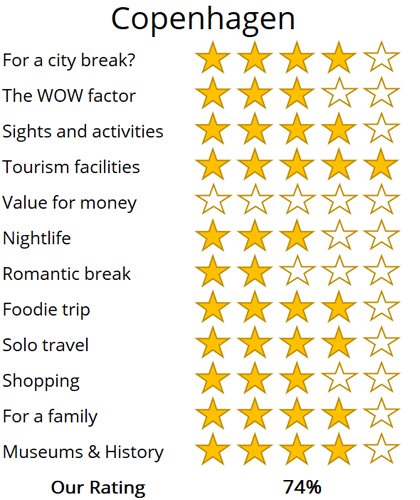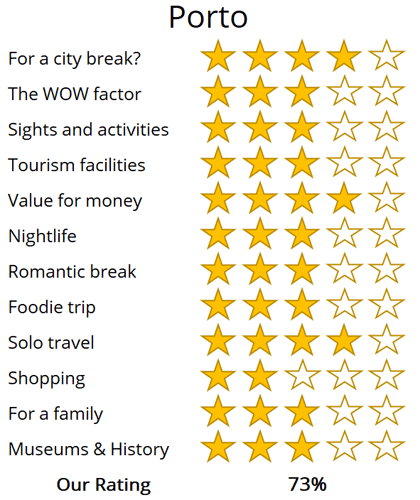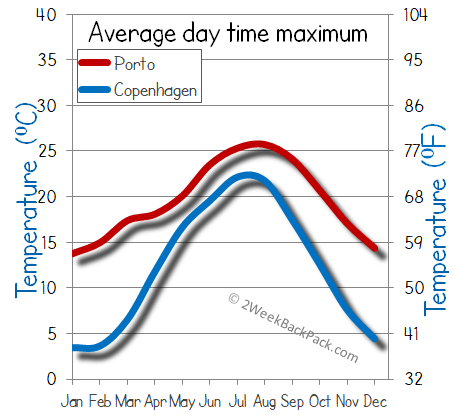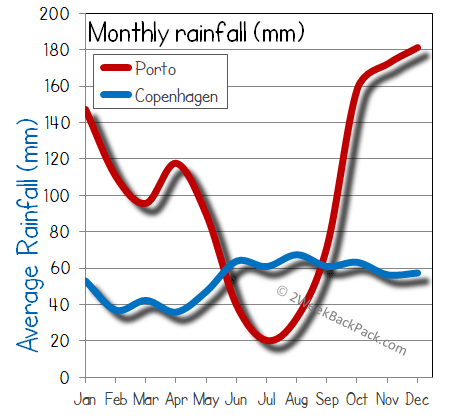WhereToGoForMyHoliday.com
The best destination comparison site!
WhereToGoForMyHoliday.com
The best destination comparison site!
Copenhagen or Porto, which is better for your holiday in 2024?
Copenhagen and Porto both offer unique and enticing experiences, but which one should you choose for your city break or holiday?
We recognise the difficulty in making this decision. While there is abundant information available on both destinations, clear guidance on which city better aligns with your travel preferences is often hard to find.
This article aims to provide an impartial comparison,and hopefully help you to choose the best city to visit.
The article is structured into several sections, each of which can be directly accessed through the following links:
• Introduction to the cities
• Scores and ratings
• Which one should I, friends, or family visit?
• When to visit and weather
• Who is the city suited for?
• The perfect 48hours (with map)
• Tourism details (where to stay? airport details?)
Introduction to Porto and Copenhagen
Sleek yet historic, gritty yet creative, Copenhagen fuses all the contradictions of Scandinavia in one outstanding city.
Yes, it's pricy. But your money buys quality in these parts, whether that's the crispy Danish pastry in the morning, the single-origin coffee beans, or those craft beers in the independent drinkeries.
Once the home of Hans Christian Andersen, the city's Indre By – the historic core – is all weaving cobbled lanes and flower-strewn cottages from centuries gone by. Meanwhile, over in districts like Christianshavn and Vesterbro, there's a buzz and energy about proceedings.
Don't forget that this capital is the veritable home of New Nordic cooking, putting foraged foods and mind-boggling flavour combos front and centre…

Amalienborg Palace (Copenhagen) is the residence of the Danish royal family
Porto is the surprise of western Europe. This hardworking and unassuming city seems to have stumbled into tourism without even realising its own potential. The variety of historic sights, personable atmosphere, along with a glass of sweet Port wine, creates a wonderful tourist destination.
Porto may be comparatively small and virtually unknown, but it can rival any of the more established tourist destinations. The unique appeal of Porto is that it is not swamped by tourists in the summer season, and is ideal for a summertime city break.
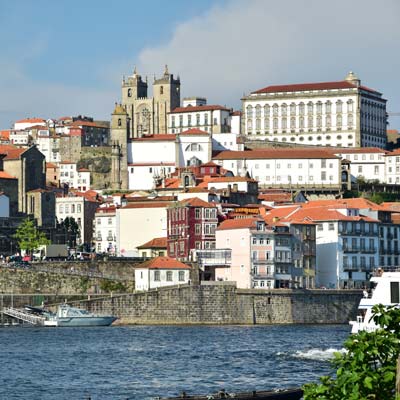
The Ribeira is the oldest district in Porto

The canals and traditional houses of the Nyhavn district (Copenhagen) are always a favourite with tourists
High-level summary for Copenhagen or Porto
Summary
Where would I journey for a personal escape?
Copenhagen
Where would I send my parents for a memorable visit?
Copenhagen
Where's the ideal destination for my adventurous 19-year-old cousin?
Porto (Copenhagen is too expensive for him!)
Where should my food-obsessed friend indulge their culinary passions?
Copenhagen
Note: The above comparisons are weather-independent and are based on travel during the most opportune times of the year. Details about the ideal travel seasons are elaborated upon later in this article.
In the sections that follow, you'll find a comprehensive comparison between these two fascinating cities. This includes recommendations on the duration of stay, the best times to visit, and tailored 48-hour itineraries for each city.
The final segment delves into practicalities for your travels, such as the best airport to fly into, the optimal districts for your accommodation, and insider tips, for when you come to explore the city.
We hope that you find all of this information useful, in planning your next exciting trip!
Destination details
How long to spend each city?
There are two sides to Copenhagen. There's the side that most visitors will aim to see, and that's all neatly packaged up for a quick two- or three-day break. Then there's the more local side. That can take weeks, or even months to enjoy to the fullest.
The upshot is that everything from short fly-in city breaks to longer jaunts are doable in the Danish capital – there's enough to keep you going, provided you've got the money to keep going!
In addition, it's worth thinking about what out-of-town excursions you might want to do from Copenhagen. These will inevitably add some time to the trip but are also downright tempting.
The likes of the ancient Viking capital of Roskilde, and the Swedish city of Malmo, are both on the menu.
Porto is a compact city, and if rushed, all of the major tourist areas can be seen in a single day. Typically, we would recommend two days, which would include a short cruise along the Douro River and time for port tasting.
If you wished to extend your trip further, there are some great days out to the historic towns of Guimarães, Braga and Aveiro. During the summer (Jun-Sep) there are beautiful beaches along the Costa Verde coastline, and you could visit the resort towns of Espinho, Vila do Conde or Matosinhos.
Related articles: 2 days in Porto – 1 week in Porto

Tivoli Gardens theme park, in the centre of Copenhagen is the second oldest theme park in the world, and was original constructed in 1850 with the aim of "when the people are amusing themselves, they do not think about politics”
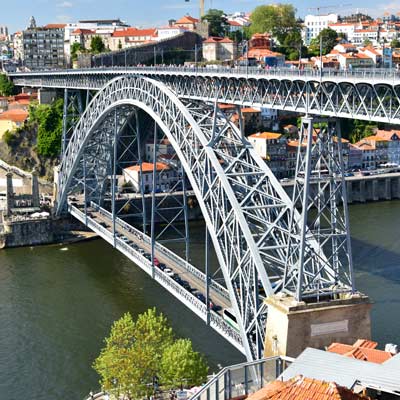
The Ponte Luís I bridge in Porto spans the Douro River
Porto is one of the best European cities for a summer city break. While the rest of southern Europe swelters under the unbearable summer heat, Porto experiences pleasant weather and is not completely overrun by tourists.
Winters are mild and wet, and there is a high chance of rain from October through to May. The middle of June is the best time to visit the city when the Santos Populares festivals are being held.
Copenhagen's weather often surprises visitors, being neither as bleak as they may assume nor as cold as it is frequently lumped together with its neighboring Scandinavian countries.
Summer is Copenhagen's most beloved season, and the city emerges from its casing of snow and ice to become a real outdoorsy gem. In the capital, this means the canal-side cafes of Christianshavn come alive with al fresco drinkers, and the breweries expand into leafy gardens. This is also the time to enjoy the famous Brygge Harbour Bath and the other marina swimming spots in full swing.
Spring and autumn are good alternatives, particularly if you're on a tight budget. Already high prices can soar in Copenhagen during the summer months.
Winter offers its own charm, peaking around Christmas when the Tivoli market fills the air with the aromas of gingerbread and spiced wine. January, although cooler, is more economical and often adorned with a captivating blanket of snow.
Copenhagen is tailor-made for creative, 30s-something city slickers. Bohemian cafes meet cutting-edge beer halls and restaurants that are breaking the mould, while workshops, design studios, and galleries cram the old town. If you're culturally engaged and enjoy places that fuse the old and the new, you could hardly do any better.
Copenhagen is famously expensive. Expect to pay around the 60kr mark (€8/$9) for a beer in most places – and even that's a decent deal! Hotels will cost a lot, no matter the season, and eating out is off the cards for anyone on a shoestring budget.
You can mitigate that if you picnic and dodge the pubs, but it's not really the place for travelers watching the pennies.
The characteristics of Porto traditionally appealed to the older visitor; it is very safe and there is a pleasant unhurried ambience, with a slightly conservative attitude. This mature opinion of Porto is often compounded by the most popular activities; Douro River cruises and Port tasting (which is great fun!).
This demographic of visitors to Porto is rapidly evolving, as younger travellers realise it is actually a progressive city, with a lot to see and do. Porto will appeal to those looking for somewhere slightly different, but who want a hassle-free trip with decent tourist facilities. Being one of the safest cities in Europe makes it ideal for solo/female travellers.

Grand Rosenborg Castle, was built as a summer residence by Frederik II in 1624, and today houses the royal treasury and displays the Danish crowns
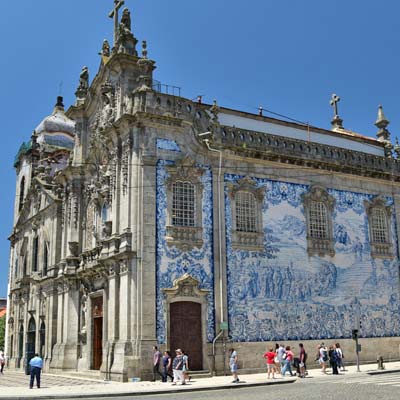
The beautiful Azulejo tile painting on the side of the Igreja do Carmo, Porto
Porto
Considering the size of Porto there is a lot to see, and you can pack in a lot in a 48 hour visit.
Below is an interactive map of where we recommend to go in 48 hours in Porto; day 1 is highlighted in green and day 2 in yellow, with optional sights marked in grey.
A tour of Porto typically starts in the Se district, with the gothic cathedral and ancient city walls. Next is the Baixa district, where you can find the Avenida dos Aliados, and enjoy the view from the top of the Clérigos Tower.
For the latter part of the day and evening visit the ancient Ribeira district, which lines the banks of the Douro River. For the evening, join one of the boat cruises along the river or to party head to the Vitória district.
On the morning of the second day, ride the traditional tram to the Foz district, which is positioned at the mouth of the Douro River and extends along a rocky coastline to the beach of Matosinhos.
In the afternoon, and the highlight of Porto, are the tours of the Port cellars and Port tasting. Lining the southern banks of the Douro River are eight of the major Port producers, each with their vast cellars and tasting tours. You’ll happily leave Porto a Port connoisseur and a little tipsy…
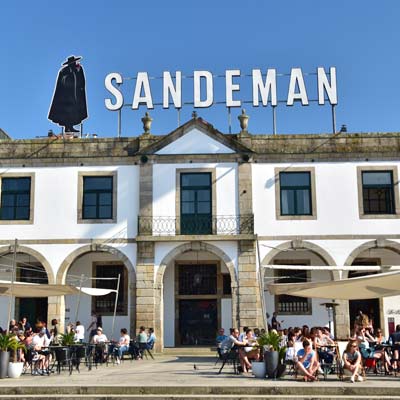
Port tasting at the Sandeman cellars– an enjoyable activity and a great way to meet fellow travellers
Copenhagen offers so much for a fun-packed 48 hours. Below is an interactive tour map - day 1 is highlighted in green and day 2 in yellow.
Day 1: Begin the first day in the Rådhuspladsen, where the ochre-tinged walls of the City Hall dominate the skyline. This is a beating hub of the city, and you might find concert stages or markets taking place on the plaza. The bustling shopping street of Strøget starts here. Hit that to move between high-street retailers and lively pubs. The walk will take you all the way to Nyhavn.
This is a charming, historic area with 17th-century canals. The painted houses are a favourite with photographers, and you can opt to do a canal boat tour from the docks. Lunchtime is over in the Bridge Street Kitchen. Sprawling across Greenlandic Trade Square, it's a casual food mecca, with hotdogs mixing with falafel pitas and sourdough pizza breads.
Full? Good – Christiania awaits. This gritty artist community come squat is a unique bohemian commune. There are some pushy drug dealers and lots of tourists, but it's worth a stop. The spire of the lovely Church of Our Saviour is sure to pull you down to one end of the area, before hopping back over to Slotsholmen for a sighting of the grand Christiansborg Palace, the home of the Danish parliament.

The side streets of the Latin Quarter (Latinerkvarteret) are a joy to explore
Day 2: If it's sunny, there's never a better way to kick-off a day in Copenhagen than down on the marina. Free to enter and bustling with life, the Brygge Harbour Bath lets you swim in the refreshing waters of the Baltic Sea right in the heart of town.
Dry off and then grab a Danish pastry on your way up to the Indre By, where you can get lost in weaving lanes of cobblestone. The vast Rosenborg Slot sits at the far end of the district. A mighty palace from the 1600s, it's packed with art and can take a few hours to explore.
Nearby Torvehallerne will do nicely for food, with its array of local Scandi dishes. A hop across the water to hipster Nørrebro is great if you're craving a beer or a coffee – Brus is a good option.
Then head back south to Frederiksstaden district. It's crowned by the Rococo Amalienborg Palace, sports stunning churches, and buts up to the old town, where you'll find loads of bars and eateries to cap off the evening.

Christiansborg Palace is the Danish Parliament building along with the official residence of the Prime minister
The infrastructure of Copenhagen is amazing, and you will leave wondering why other cities struggle so badly…
The impressive and uber-efficient Kastrup Airport is the gateway to Copenhagen. A mere 6km from the center, you can hop from the terminals to the downtown by train in just 15 minutes or so. Use either the direct lines or metro links. Tickets are purchased on the station platforms and cost in the region of 36 DKK.

Copenhagen city hall and the Rådhuspladsen, the main plaza of the city
Copenhagen has many hotels and accommodation options, but the city has one of highest occupancy rates of Europe (a yearly average of 81%). That means booking early is key. We'd recommend trying to score somewhere in the Indre By area.
The old core, it's close to all the main sights. If you're on a tighter budget, going north to Nørrebro might offer a few extra deals. Meanwhile, the Vesterbro district is an up and coming area, which is trendy and a touch edgy. Frederiksstaden is a more refined and contains many of the smarter hotels.
If you want to get around like a real CPH local, then there's nothing for it but to rent a bike. These are cheap and easy to find in pretty much any area of town. A full day's cycling should cost around 150 DKK (£22).
Copenhagen is a very safe city, especially for a capital. People are often eager to help and there are good public services in general. Be more wary if you're venturing off the beaten track. Certain corners of Nørrebro and Christiania can be sketchy, particularly after dark.
Porto is a recommended destination for an alternative city break. Porto has a single airport which is 12km north of the historic centre and is connected by the metro. Porto has fewer flight routes and departures than other major cities, which means demand for weekend flights can be high. Equally, during the low season, there are bargain flights to be found.
Accommodation tends to be good value with ample supply, and most tourists are based in the Vitória, Sé or Baixa districts (all on the north side of the river). Porto can be easily explored on foot and rarely any public transport or taxis are needed for the entire trip. Just beware, there are steep hills!
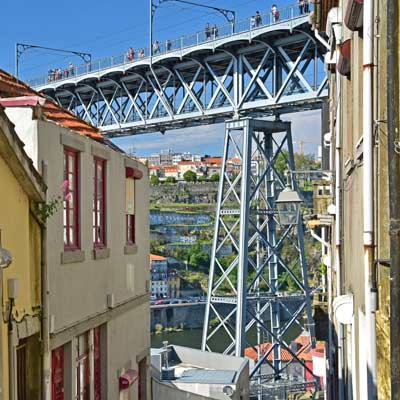
The pretty historic centre of Porto
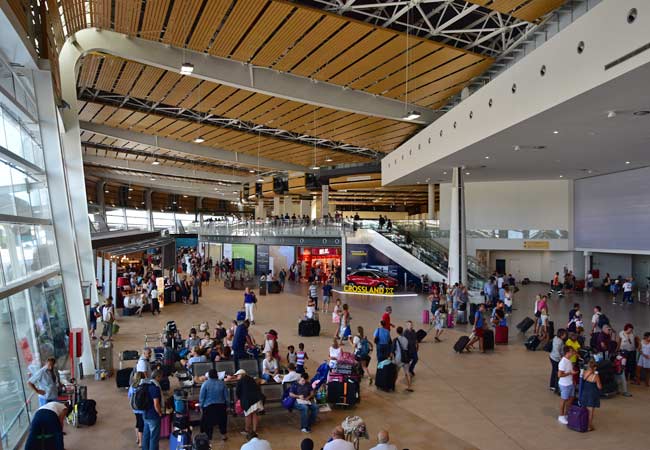
oh we were stuck in the airport!

Copenhagen was a bit expensive...

All we did was drink beer in Brussels...
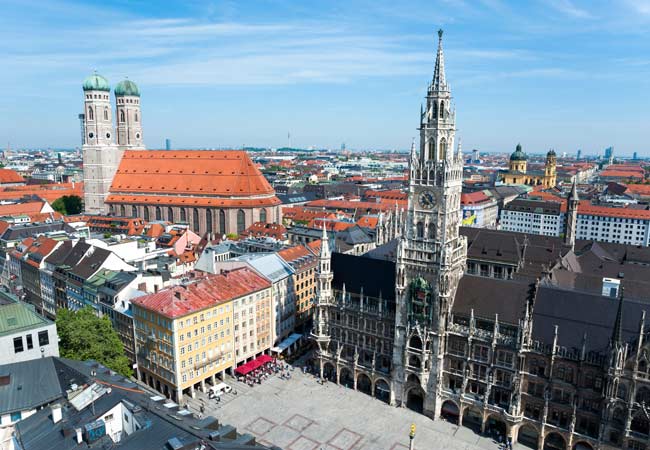
Muncih was crazy

And we got so burnt!

Remeber that night in Rome

oh we were stuck in the airport
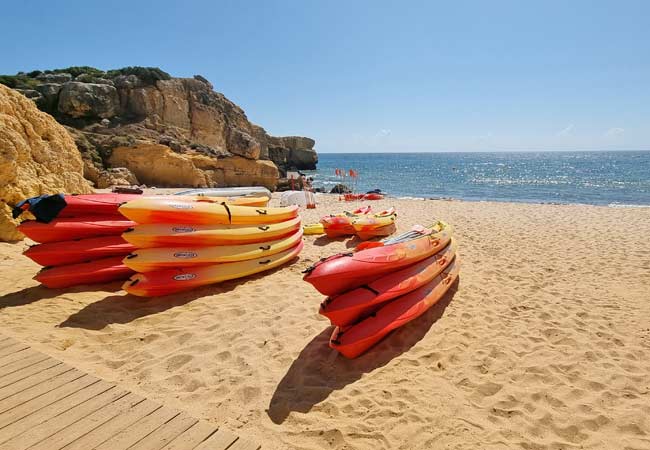
So much fun kayaking

Berlin and that group from Austria!

There was such a view from that church

And we got so burnt!

Munich was eventful, wasn't it!

Such a view from that cathedral in Florence
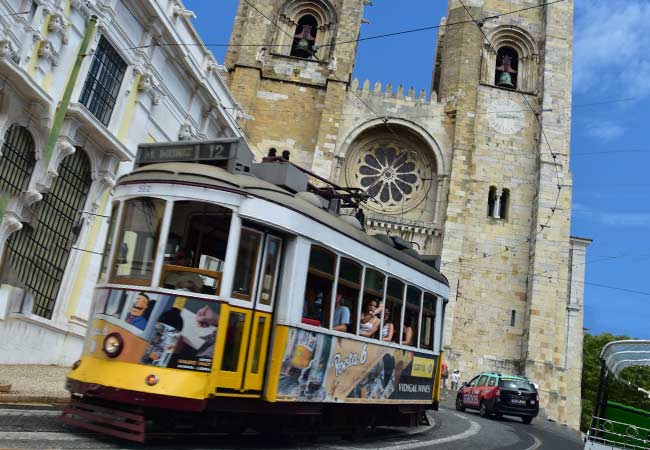
Lisbon was such so much fun

Last summer was so much fun .... x

Remeber that night in Rome

Lisbon was such so much fun

Such a view from that cathedral in Florence

Munich was eventful, wasn't it!

And we got so burnt!

Remeber that night in Rome

All we did was drink beer in Brussels...

Berlin and that group from Austria!

Can't wait to go back to Dubrovnik

Remember that boat ride in Prague

Copenhagen was a bit expensive...
